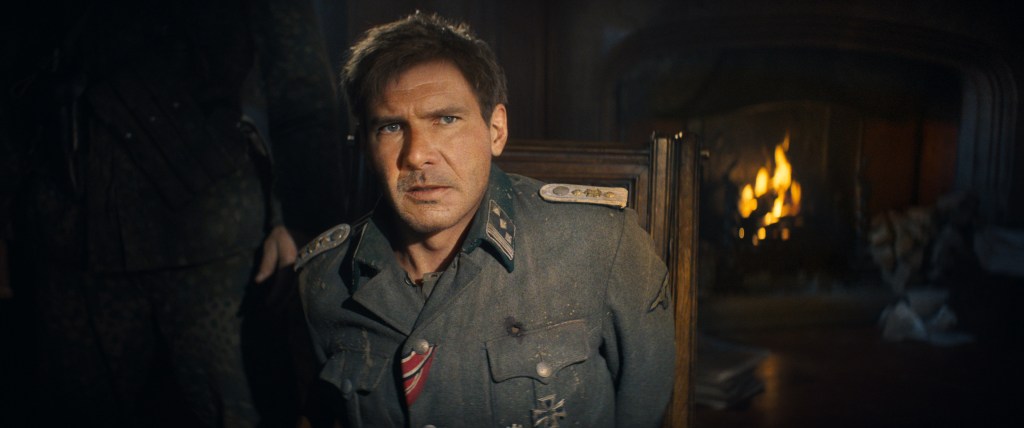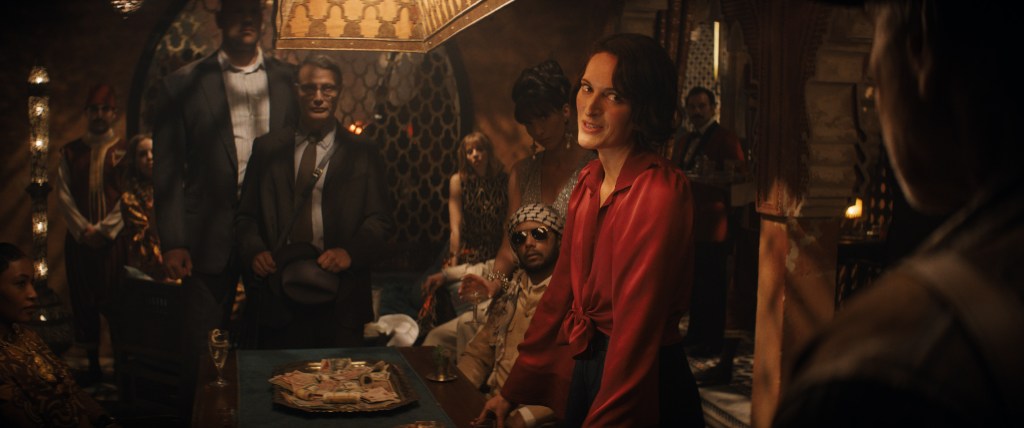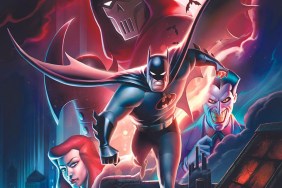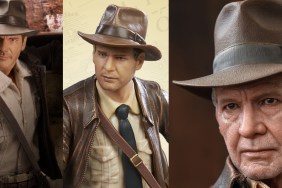Most of us have some Indiana Jones movies we like more than others. But in the end, and as time passes, they’re all usually — at the very least — pretty good. One major reason for that is that Harrison Ford genuinely loves this character and puts in the work to bring him to life.
But it may be easy to forget that before his recent run of legacy sequels, Ford was often derided for lethargic performances in big-payday movies, rather than using his A-list powers to launch a better project and possibly win awards. Still, he loves Indy, and it shows — what other 80 year-old would agree to get his ass kicked on a regular basis just so his alter-ego could get a grand finale?
The other reason most of the Indy movies age well is director Steven Spielberg, absent in Dial of Destiny for the first time. (He does appear in the hour-long documentary on the Indiana Jones and the Dial of Destiny 4K.) But the Beard’s absence in the director’s chair on Indy’s latest (and possibly last) romp makes sense. All prior Indy movies drew heavily on older movies from the time period depicted: serials for Raiders, Busby Berkeley and Gunga Din for Temple of Doom, and Bob Hope/Bing Crosby comedies for Last Crusade. Even the much-maligned Crystal Skull was informed by atomic age flying saucer and giant ant B-movies.
Now, it’s Indy’s turn to pilfer from himself.
It’s the Mileage
Over 40 years since Raiders of the Lost Ark, however, Dial of Destiny becomes the ouroboros. The picture eats its own tail by paying homage to older Indiana Jones movies. As a copy of a copy, it bears the look of a faded photograph. As the documentary expresses, Indy himself is the artifact this time, and the world around him shot like the sandy desert one might find antiques buried in.
Cinematographer Phedon Papamichael uses Douglas Slocombe’s 1981 shooting style as a guide, but while Slocombe’s work still feels immediate and in the now, Papamichael adds brown-yellow filters to not just evoke Slocombe, but specifically invoke Slocombe’s footage if it visibly aged.

Director James Mangold doesn’t really try to adapt Spielberg’s style, outside of the opening Nazi-fighting scene with an Uncanny Valley de-aged Indy. Some reviewers at the time speculated that the digital facelift was made for 4K discs; while indeed this one allows you to look closer at the facial details, the mannequin effect isn’t gone. Consider it, perhaps, pointed commentary: a simulacrum of young Indy in a simulacrum of his previous director, and one from which an aged Indy wakes up in 1969.
Sure, they probably could have gotten Alden Ehrenreich again, and the needle seems to have moved enough on Solo that fans might be happy to see him. But there is a thematic point: you can’t go back to youth again, only simulate it in your mind to be weirdly cleaner in hindsight than it was. And after all, isn’t the Indy franchise as a whole doing the same to the films of Spielberg’s youth? What is Temple of Doom if not Gunga Din the way young Steve wished it had been?
Back to the…Present
From there on, the action sequences are less Indy and more James Bond. That said, they resemble particular Bond sequences that came after 1969 — adding to the temporal dislocation effect. There’s a brief detour into an obligatory underground temple with traps, and in addition to Phoebe Waller-Bridge as Indy’s new goddaughter, we get a kid sidekick in a straw hat who has to be based on One Piece’s Monkey D. Luffy.
The climax takes a bold step into time travel, which is once again part of the theme: Indy is the relic, and now he has a chance to actually become one, making the past into the present. And even as the movie indulges that feeling, big-time, it also insists that’s no way to live, or die. Indeed, Indy can only reunite with Marion once he actively — with a big assist from his goddaughter’s fist — puts the past behind him.

In addition to the documentary and the trailer, the only other extra feature is the option to watch the movie with just the John Williams score. It’s not really any way to watch the story unfold, but a decent way to listen to the score while just happening to have some visuals. It’s interesting to note when the movie doesn’t have music — New York as played by Glasgow, Scotland, is mostly bereft. And watching it without sound effects or dialogue allows other touches to come to the forefront, like the way red lights are often reflected in Mads Mikkelsen’s glasses, despite very little else in the film being red.
Memory Game
The opening sequence is every bit as bluescreened as you might have imagined, as the documentary shows, but much of what follows takes place on really elaborate sets and locations. The 4K presentation is crisp, with plenty revealed in the shadows; Mangold loves lens flares more than Spielberg, but the sepia-esque tone of old photos stays mostly constant, reminding us this is all a throwback.
To the extent that Dial of Destiny is a nostalgia-fest, it is at least a thematically consistent one. Whichever of the previous films was your favorite, this one could never be any version of that. Nor, in the end, does it want to be — it may whet your memory for the old, but it inevitably moves on. So, too, should we all.
We could have squeezed some more Blu-ray extras from this, though. C’mon, Lucasfilm.
Movie: 3.5/5
Extras: 1/5
Indiana Jones and the Dial of Destiny is now available on Blu-ray, DVD, and 4K.









